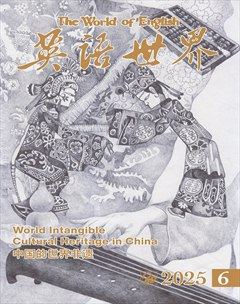Silk, a luxurious and highly sought-after fabric, has a long and rich history in China. The art of silk weaving in China is a testament to the country’s craftsmanship and cultural significance. From the intricate designs to the meticulous weaving techniques, Chinese silk is a true work of art.
丝绸是一种奢华且广受追捧的织物,在中国有着悠久而丰富的历史。中国的桑蚕丝织技艺是该国工艺水平与文化内涵的明证。中国丝绸纹样精美,织造技艺精湛,堪称艺术珍品。
Chinese silk is not only admired for its beauty but also for its durability and comfort. Silk is a natural fiber that is lightweight, breathable, and hypoallergenic. It has excellent moisture-wicking properties, making it ideal for both hot and cold climates. Chinese silk is also known for its lustrous sheen and smooth texture, which adds to its luxurious appeal.
中国丝绸不仅因美丽备受赞誉,还因耐用和舒适为人称道。丝绸属于天然纤维,质地轻盈,透气性强,而且不易致敏。丝绸吸湿排汗性能上佳,无论炎热还是寒冷气候条件下都是理想选择。中国丝绸还以光泽亮丽、质地顺滑著称,这也使其更具奢华魅力。
Intricate designs in Chinese silk
中国丝绸的精致纹样
Chinese silk is known for its intricate and elaborate patterns, which often depict scenes from nature, mythology, or daily life. These designs are created using various techniques, such as embroidery, brocade, and jacquard. Each technique requires a different set of skills and tools, but all result in stunning and detailed designs.
中国丝绸以精致繁复的图案闻名。这些图案通常描绘自然世界、神话传说或者日常生活中的情景,通过刺绣、织锦和提花等多种工艺制作而成。每种工艺需要不同的技巧和工具,最终呈现的纹样细致入微,令人惊叹。
One of the most famous Chinese silk designs is the dragon motif. The dragon holds great significance in Chinese culture, symbolizing power, strength, and good fortune. The dragon is often depicted in a sinuous and dynamic manner, with its body twisting and turning across the fabric. The intricate details of the dragon’s scales and claws are meticulously woven, creating a sense of movement and life in the design.
中国丝绸最著名的纹样之一是龙纹。龙在中国文化中意义非凡,象征权势、力量和好运。丝绸上的龙常被描绘得蜿蜒灵动,龙身在织物上曲折盘绕。龙鳞和龙爪每一细微之处都经过精心编织,使纹样充满动感与生气。
Another popular design in Chinese silk is the peony flower. The peony is considered the king of flowers in Chinese culture, symbolizing wealth, honor, and beauty. The delicate petals of the peony are intricately woven, with each thread carefully placed to create a lifelike representation of the flower. The vibrant colors of the peony, such as deep reds and pinks, are achieved through the use of natural dyes, further enhancing the beauty of the design.
中国丝绸另一流行纹样是牡丹花。牡丹在中国文化中是花中之王,象征富贵、荣耀和美丽。娇嫩的牡丹花瓣编织精巧,一针一线丝丝入扣,花朵栩栩如生。丝绸上的牡丹色彩鲜艳,诸如深红和粉红等颜色均源于天然染料,使纹样更加美不胜收。
Exploring the cultural significance of Chinese silk
中国丝绸文化内涵探索
Legend has it that the Empress Leizu, wife of the Yellow Emperor, discovered silk when a cocoon fell into her tea. Fascinated by its shimmering threads, she unraveled the cocoon and began weaving the silk fibers into fabric. This marked the beginning of China’s long and illustrious history with silk production.
相传黄帝的妻子嫘祖因一只蚕茧落入茶中而发现丝绸。嫘祖为蚕茧富有光泽的丝线所吸引,于是剥开蚕茧,开始将蚕丝织成布料。这也成为中国丝绸生产悠久而辉煌历史的开端。
The cultural significance of silk in Chinese society cannot be overstated. Silk has long been associated with wealth, luxury, and prestige. In ancient China, silk was reserved for the emperor and the nobility, symbolizing their elevated status. The production and trade of silk played a crucial role in the economy, with the Silk Road serving as a major trade route connecting China to the rest of the world.
丝绸在中国社会中的文化意义怎么强调都不为过。长期以来,丝绸一直与财富、奢华和声望联系在一起。在古代中国,丝绸专供皇帝和贵族享用,成为他们显赫地位的标志。丝绸生产和贸易在经济发展中发挥了关键作用,丝绸之路即是连接中国与世界其他地区的主要贸易通道。
Silk also holds deep symbolic meaning in Chinese culture. It is often associated with fertility, prosperity, and good fortune. Silk garments are traditionally worn during important ceremonies and celebrations, such as weddings and festivals. The vibrant colors and intricate designs of Chinese silk reflect the rich cultural heritage of the country, making it a cherished and treasured fabric.
丝绸还在中国文化中具有深刻的象征意义,常常与人丁兴旺、繁荣昌盛以及吉祥如意联系起来。按照传统,重要仪式和庆典上适合穿着丝绸服饰,比如婚礼和节日。中国丝绸的鲜艳色彩和精致图案反映了这个国家丰富的文化遗产,丝绸也因而成为备受珍爱的织物。
Unveiling the secrets of Chinese silk craftsmanship
中国丝绸工艺揭秘
Weaving silk is a meticulous process that requires precision and patience. The journey begins with the cultivation of silkworms, which feed on mulberry leaves and produce the raw material for silk. The silkworms spin cocoons made of a single thread that can stretch up to a kilometer in length. These cocoons are carefully harvested and boiled to loosen the silk fibers, which are then unraveled and spun into threads.
丝绸织造容不得一丝马虎,需要细致、耐心。整个过程自养蚕开始。蚕以桑叶为食,产出丝绸原料。桑蚕吐出的单根丝线结成蚕茧,茧丝长度可达一公里。接着小心收集蚕茧,在水中煮沸,促使蚕丝纤维松弛,随后剥茧并且纺成丝线。
The next step in the process is the weaving of the silk threads into fabric. Traditional Chinese silk weaving is done on wooden looms, with each thread meticulously threaded through a series of heddles and reeds. The weaver carefully manipulates the threads, interlacing them to create intricate patterns and designs. This process requires great skill and concentration, as even the slightest mistake can ruin the entire piece.
下一道工序是将蚕丝织成布料。中国传统丝绸是在木制纺机上织造出来的,每根丝线需要精心穿过一连串综片和筘齿。织工小心操作,丝线相互交织,形成复杂的花式和纹样。这一过程要求技艺纯熟,必须做到全神贯注,哪怕最小的失误也会葬送整件织物。
One of the most famous silk weaving techniques in China is brocade. Brocade is characterized by its raised patterns, which are created by weaving additional threads into the fabric. This technique allows for the creation of intricate designs with a three-dimensional effect. Brocade silk is often used to make traditional Chinese garments, such as cheongsams and dragon robes.
中国最著名的桑蚕丝织技艺之一是织锦。织锦的特点体现在浮纹上,这需要另将丝线织入布料。这种技艺可以创造出具有立体效果的复杂纹样。织锦缎经常用于制作中式服装,比如旗袍和龙袍。
Another notable silk weaving technique in China is jacquard. Jacquard involves using a special loom that can create complex patterns by controlling individual threads. This technique allows for the creation of highly detailed and precise designs, making it ideal for intricate motifs and borders. Jacquard silk is often used to make decorative items, such as tapestries and tablecloths.
中国另一种著名桑蚕丝织技艺是提花。提花织法需要在一种特殊织机上完成,通过控制一根根丝线织出复杂图案。提花技艺可以创造出极为细致和精确的纹样,非常适合复杂图案和边饰。提花绸常常用来制作装饰物品,比如挂毯和桌布。
Today, Chinese silk craftsmanship continues to thrive, with artisans preserving and innovating upon traditional techniques. The demand for Chinese silk remains high, both domestically and internationally, as people recognize the unparalleled quality and beauty of this fabric. Chinese silk is not only used in clothing but also in home furnishings, accessories, and even artwork.
如今,中国丝绸工艺持续蓬勃发展。手工艺人在传承传统技艺的同时,不断进行创新。中国丝绸的国内外需求居高不下,这种布料无与伦比的质量和美感得到认可。中国丝绸不仅用来制作服饰,而且用于家居饰品、各种配饰乃至手工艺品。
Preservation and global recognition
传统保护与全球认可
In 2009, China’s silk weaving techniques were inscribed on UNESCO’s Representative List of the Intangible Cultural Heritage of Humanity, underscoring its importance in preserving this ancient tradition for future generations. Today, regions such as northern Zhe-jiang, southern Jiangsu along the Taihu Lake basin, and Chengdu in Sichuan continue to uphold these traditions, contributing to China’s rich cultural heritage.
2009年,中国桑蚕丝织技艺入选联合国教科文组织人类非物质文化遗产代表作名录,凸显子孙后代保护这一古老传统的重要性。如今,浙江北部、江苏南部太湖流域以及四川成都等地区都在坚守这些传统,为保护中国丰富的文化遗产贡献力量。
(译者单位:中央民族大学外国语学院)






